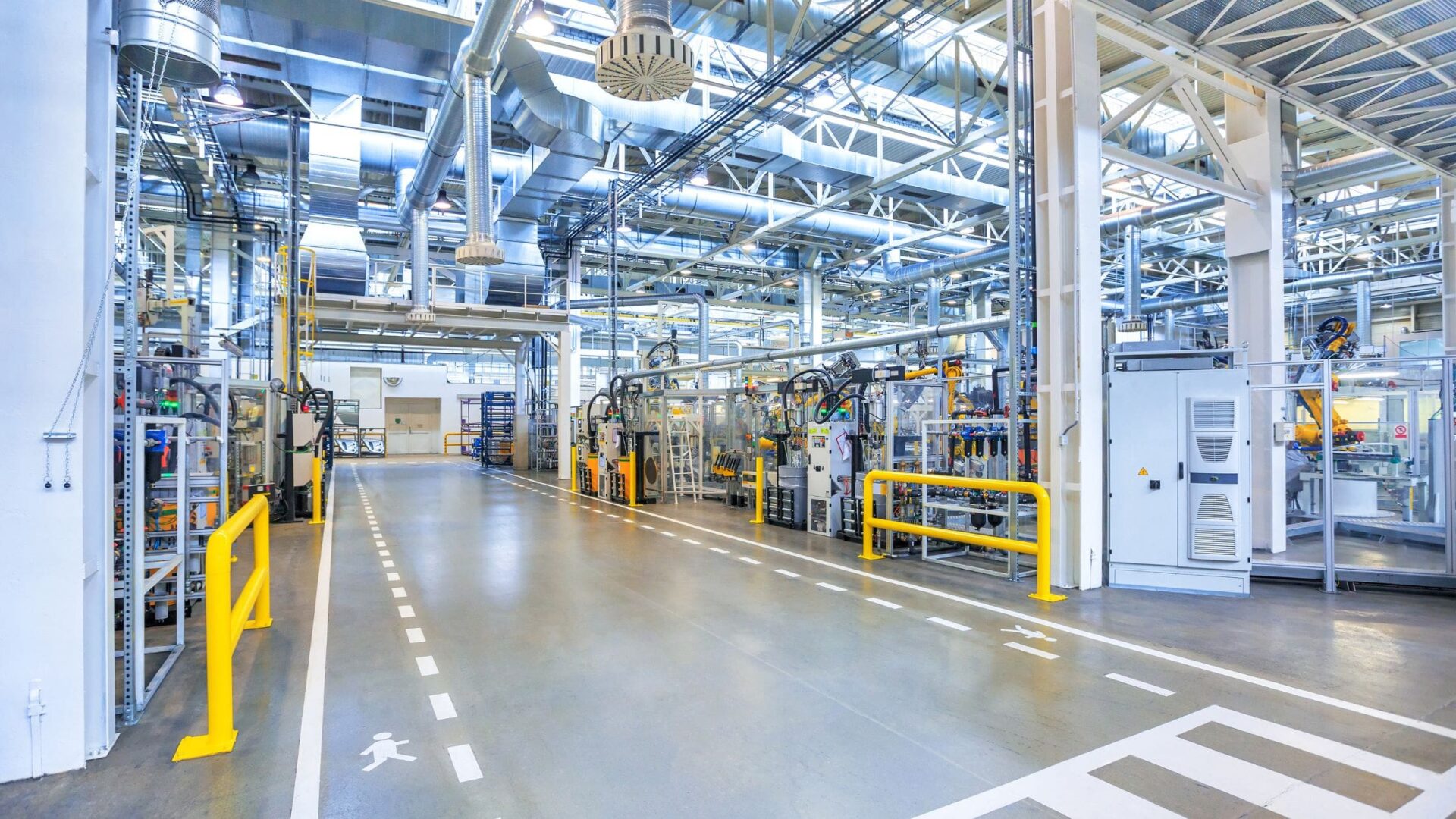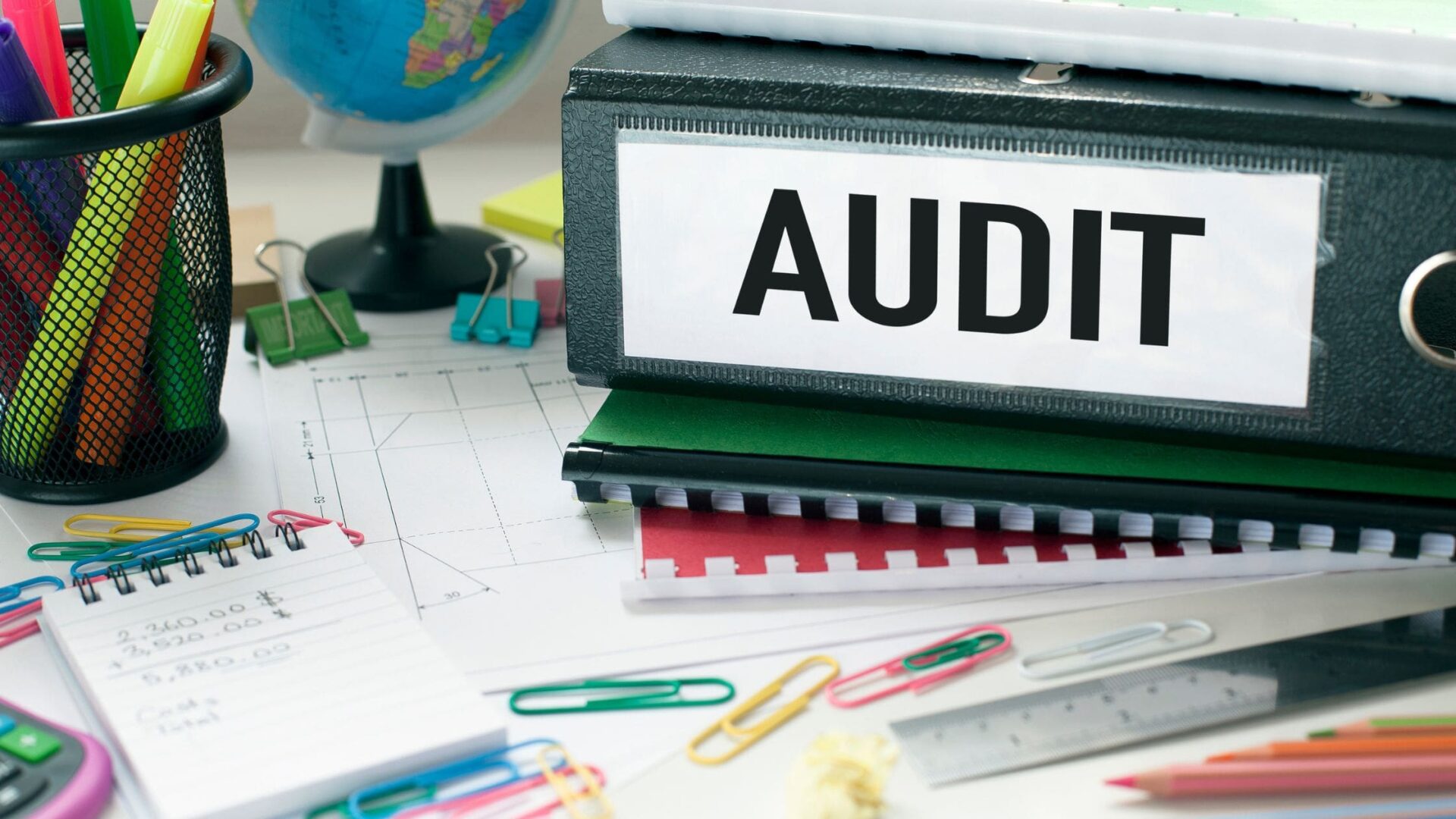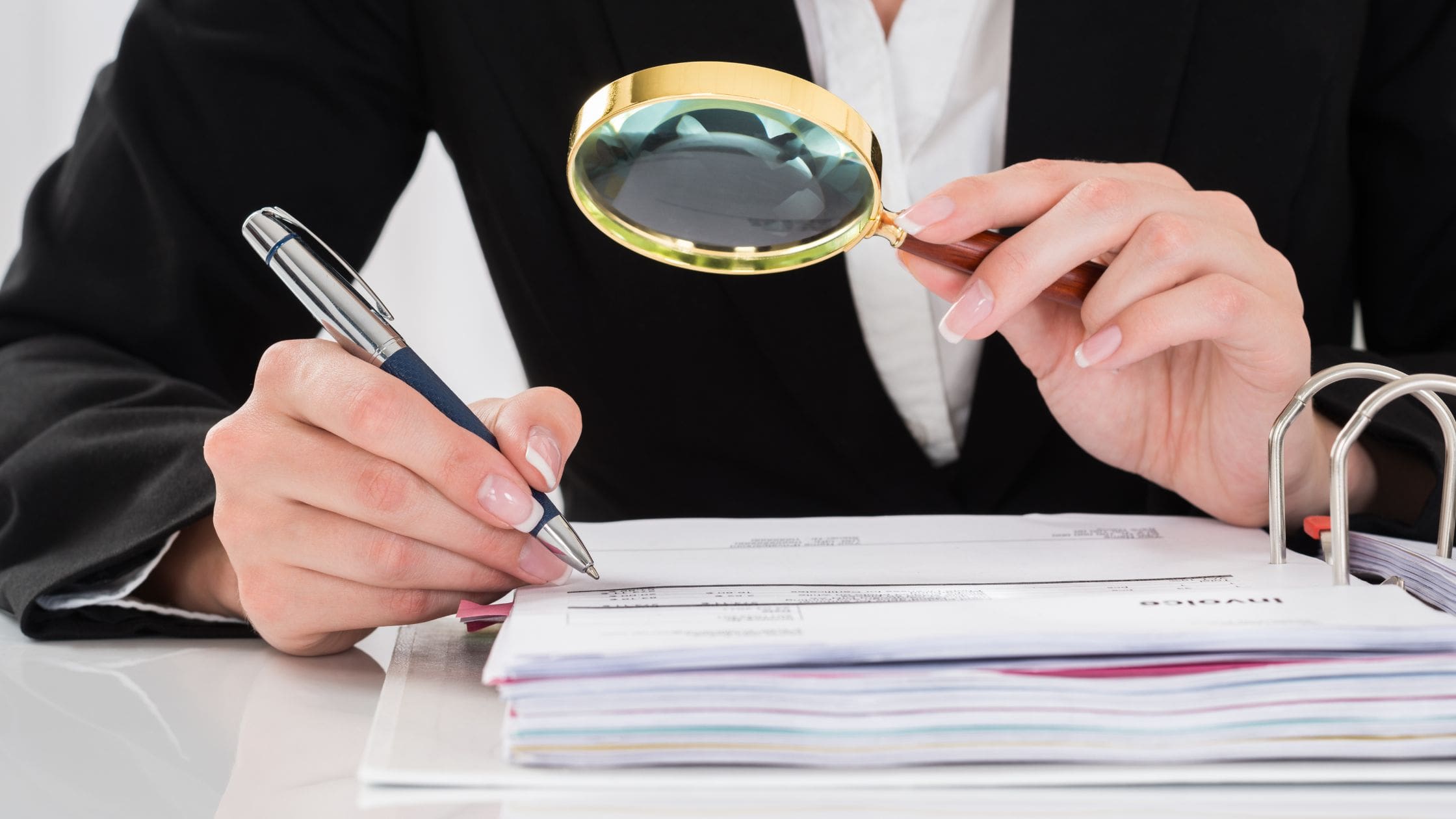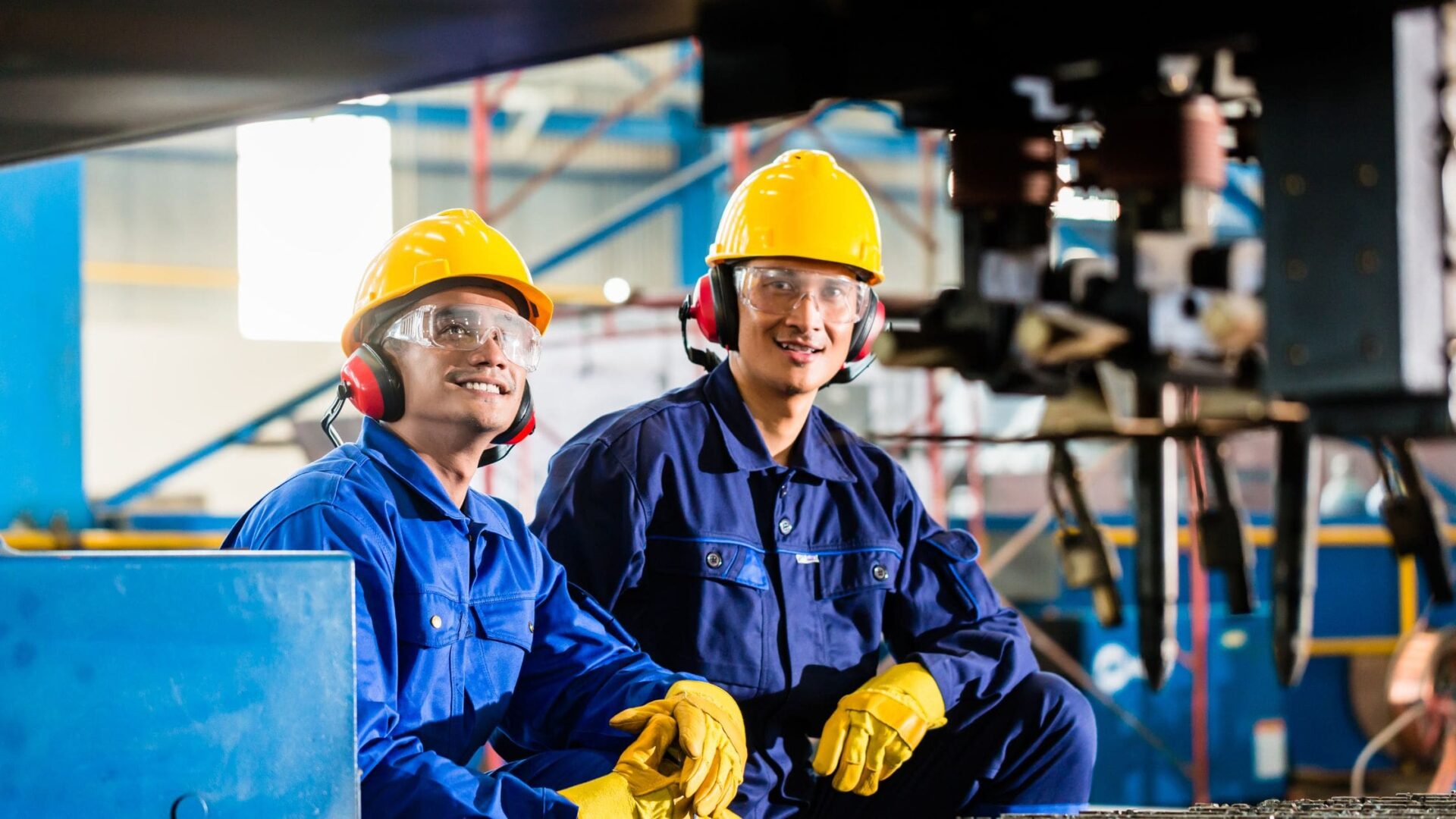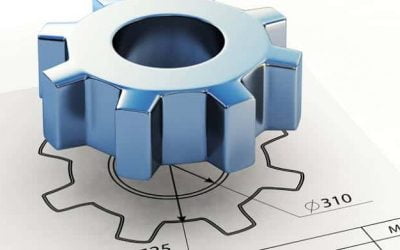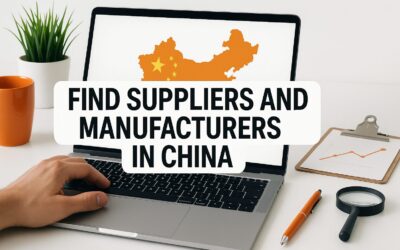If you’re thinking about sourcing from Vietnam, you’re not alone, and for good reason. As more companies shift away from relying solely on China, Vietnam is stepping up in a big way. With its manufacturing sector expected to hit US $108.07 billion by 2025, with a compound annual growth rate of 3.29 % expected between 2025 and 2029, industries like textiles, footwear, electronics, and furniture are already booming here.
It’s not just about cheaper labor, though at US $200–300 per month, wages are still around half of China’s. It’s also about steady politics, business-friendly policies, and big infrastructure moves like the US $7.3 billion Lao Cai–Quang Ninh rail project.
But let’s be honest, growth can bring risks. You can’t just go on promises. That’s why factory audits matter. They help you see beyond a product sample and into how a factory really works, from quality systems to labor conditions to overall compliance. Whether you’re a new buyer or expanding into Southeast Asia, knowing your supplier is legitimate, ethical, and capable is everything.
Businesses increasingly turn to third-party factory audit providers to ensure trustworthy partnerships and product quality.
Factory audits differ from inspections and lab testing but together they form a robust quality assurance framework in Vietnam’s manufacturing landscape. Audits evaluate overall factory systems and practices; inspections focus on specific product batches; and lab testing assesses materials for safety or compliance.
In this article, we’ll focus on how factory audits in Vietnam work, when to use them, and how they help protect your business from costly surprises.
Why Conduct a Factory Audit in Vietnam?
As you look to diversify your sourcing, Vietnam presents many opportunities, but also new challenges. That’s why running a factory audit before placing an order can make or break your sourcing process. You’re not just checking if the production facilities exist, you’re confirming if they meet quality, compliance, and delivery standards that align with your brand.
Factory audits help you verify the actual manufacturing process, not just promises made during negotiations. You can uncover misrepresented production capability, ensure the supplier isn’t outsourcing to unapproved countries, and confirm capacity before placing capital at risk.
This is particularly important for investment professionals, brands, and buyers managing complex supply chains.
Audits also support ISO 9001/14001, SMETA, C-TPAT, and SA8000 certification goals, many of which are required by international retailers.
A single-day general audit in Vietnam typically costs US $300–400, and regular follow-ups help track improvements, reduce non-compliance risks, and avoid hidden issues that could delay production or increase shipping costs.
What Types of Factory Audits are Conducted in Vietnam?
Several types of factory audits like quality system audits, social compliance audits and environmental audits,,are conducted in Vietnam, each focusing on a different aspect of supplier reliability and production integrity.
By choosing the appropriate audit type, you can assess key factors such as labor conditions, waste management procedures, and equipment maintenance. Each audit type addresses specific risks within the supply chain and allows you to take corrective actions before issues affect your products.
Whether you’re sourcing furniture, power tools, or home appliances, these audits support better decision-making and long-term partnerships.
It should be noted that most of the time a business will benefit if it conducts all factory audits at once.
Social Compliance Audit (SQA)
If you’re concerned about labor standards and workplace integrity, a social compliance audit is essential. This type of audit focuses on the rights and well-being of factory workers, evaluating the conditions under which your products are made.
It examines whether suppliers follow fair labor practices, safety regulations, and ethical employment policies within their production facilities.
One common starting point is a supplier assessment. This entry-level audit checks for legal registration, a legitimate Vietnamese presence, and basic HR documentation. The average fee for such an audit ranges between US $300 and $400. It’s a practical way to confirm if a factory is ready for long-term cooperation.
During the audit process, inspectors review time records, verify wage payments, and assess protections in place for juvenile workers. They also look at worker representation systems, such as grievance mechanisms or union structures.
Environmental & Fire Safety Audit (EFA)
To evaluate how a factory manages its environmental impact and fire prevention procedures, you can request an environmental and fire safety audit. This type of assessment focuses on whether the facility meets local and international standards regarding pollution control, energy use, and workplace safety.
Inspectors check for proper storage and disposal of hazardous waste, review emissions logs, and analyze energy-efficiency practices. They also assess whether fire safety equipment is maintained regularly and whether escape routes are clearly marked and accessible. Documentation such as fire permits and environmental certificates is often reviewed for accuracy and authenticity.
The typical cost of this audit falls between US $300 and $500, depending on the size and complexity of the factory.
Capability and Capacity Audit (CSA)
When you’re evaluating a new supplier in Vietnam, one of the most important checks you can request is a capability and capacity audit. This type of factory audit assesses whether the production facilities, workforce, and equipment can meet your order volumes within your required timelines. It also determines if the manufacturer can maintain consistent quality while scaling production.
The audit begins with an evaluation of core manufacturing capabilities. Auditors review machinery specifications, the age and condition of production equipment, and throughput capacity across key process lines.
A strong focus is placed on preventive-maintenance planning, as machinery downtime can directly affect delivery schedules. Auditors often conduct a bottleneck analysis to identify any constraints that could impact performance.
You’ll also receive a forecast comparison that measures real capacity against promised volumes. These audits are often aligned with ISO 9001 quality management system standards and typically cost between US $800 and $1,000.
Technical Audit
While a capability audit focuses on volume, a technical audit dives into the precision and consistency of the actual manufacturing process. This is especially useful if you’re producing specialized products like power tools, home textiles, or components for home appliances. The goal is to verify that the supplier has the systems and procedures needed to meet exact product specifications across every production cycle.
During the audit, inspectors review how well the factory handles critical tolerances and evaluates their calibration systems and measurement tools. The presence and quality of in-line quality control checkpoints are examined, including how defects are recorded, flagged, and corrected. Historical data is also reviewed, particularly defect-rate trends and corrective actions taken over time.
Auditors check technical documentation, standard operating procedures, and product-specific control plans to ensure they align with your requirements.
Ethical Audit (EA)
If your goal is to work with manufacturers in Vietnam that follow ethical labor, business, and environmental practices, an ethical audit provides the framework you need. This type of factory audit examines how suppliers treat their workers, manage anti-corruption procedures, and implement sustainability measures throughout their operations. It gives you clear visibility into whether a factory is aligned with the social and environmental expectations of global markets.
Beyond checking labor rights and fair wages, the audit process includes a review of stakeholder-engagement strategies, emergency preparedness, and sustainability policies. It maps the environmental impact of production across the supply chain and identifies any weak points where improvements are needed.
This type of evaluation is especially useful if you’re sourcing from industries like apparel, furniture, or electronics, where social and environmental concerns are increasingly regulated.
The cost of an ethical audit typically ranges from US $700 to $1,000. For many companies, this level of due diligence is necessary to protect their brand reputation and ensure long-term supplier compliance.
Security Audit (C-TPAT / TAPA)
Security audits are critical if you’re importing high-value goods from Vietnam into the US or EU. These evaluations focus on safeguarding the integrity of cargo throughout the sourcing and shipping process. A factory audit of this type ensures that your supplier’s production facilities meet international supply chain security standards and prevent tampering or theft during transit.
The audit reviews how access is managed across the factory premises, including employee entry points, visitor logs, and surveillance systems. Auditors also examine physical cargo controls such as anti-tampering seals, container locks, and load verification steps.
These elements are often aligned with ISO 28000 guidelines and are required for programs like C-TPAT or TAPA, which help streamline customs clearance and reduce delays.
Security audits also verify document controls, including shipment records and customs documentation, to minimize the risk of fraud or inconsistencies.
What are the Requirements for a Factory Audit?
A clear scope, detailed checklist, and measurable KPI benchmarks should be defined well in advance. These elements set the foundation for a consistent audit process, allowing you to assess production capabilities and compliance accurately.
Before the audit begins, the factory must provide access to key business documentation.
This includes valid business licenses, financial statements, export records, and certificates linked to relevant production facilities. You also need full access to operational areas and the availability of key factory management personnel during the evaluation.
For audits covering quality management or environmental performance, the factory should prepare certifications such as ISO 9001, ISO 14001, SA8000, and SMETA. Supporting materials like fire safety permits and environmental impact assessments should also be ready for review.
What Does a Factory Audit in Vietnam Typically Cover?
A factory audit in Vietnam typically covers a wide range of operational areas to evaluate whether a supplier is capable of delivering consistent quality under acceptable compliance standards.
When you request an audit, the goal is to look beyond samples and understand how the factory runs on a day-to-day basis.
This includes an assessment of the quality management system, production capability, infrastructure, documentation, and ethical practices.
Auditors will review process control methods, human resource protocols, and whether the production facilities meet international standards. They check if the company is maintaining up-to-date certifications and operating under responsible labor and safety practices.
Each part of the audit is designed to give you insight into how your products are being made—from sourcing raw materials to packing finished goods.
Quality Management Systems
Auditing the quality management system helps determine whether a supplier can maintain consistency across batches and meet your product standards.
This includes checking certifications like ISO 9001 and reviewing the company’s standard operating procedures. Inspectors assess the design and control of QA/QC processes and whether they are properly documented and executed.
They also review data-driven records, including defect-rate history, corrective and preventive action logs, and calibration certificates for measurement tools.
These records indicate whether the supplier takes a structured approach to identifying and resolving quality issues. In many cases, statistical process control charts are reviewed to understand how variations are monitored and corrected during the production cycle.
Production Capability
Evaluating production capability helps you verify that a supplier can meet order quantities on time without compromising quality. This part of the audit includes a thorough inspection of machinery, workforce capacity, and lead time forecasts. It’s especially important when you plan to scale up or diversify product lines across multiple regions or product categories.
Auditors examine whether the factory maintains preventive maintenance schedules and tracks machine utilization rates. A utilization level above 80% may signal strong efficiency but also warn of limited flexibility. During this review, surge-capacity planning is assessed to determine if the supplier can manage spikes in demand without affecting delivery timelines or product quality.
You’ll also receive data on bottlenecks, shift structure, and resource allocation across the production floor.
Ethical and Compliance Standards
This part of the factory audit focuses on working conditions, anti-forced labor policies, and compliance with Vietnam’s legal standards for labor hours and compensation.
Auditors check for signs of child labor, excessive or unpaid overtime, and restrictions on worker movement within the factory premises. One key indicator is whether employees are working beyond the legal 48-hour workweek without appropriate documentation or compensation.
They also examine grievance mechanisms, worker representation, and training procedures to support labor rights and transparency.
If you’re sourcing products in sectors like home textiles, footwear, or electronics, these checks help ensure your supply chain avoids reputational and operational risks.
Ethical and compliance audits also support international certification efforts and align with evolving expectations from clients, regulatory bodies, and investment professionals seeking socially responsible manufacturing facilities.
Infrastructure and Logistics
A thorough review of infrastructure and logistics gives you a clear view of whether a factory can support stable, on-time delivery across your markets. This includes evaluating accessibility, storage capabilities, and shipping infrastructure to minimize disruptions across the supply chain.
Auditors assess how close the factory is to major ports—ideally within 60 kilometers—and whether it has reliable transportation links for raw material intake and outbound logistics.
Onsite power backup is another critical factor, especially in industrial areas prone to energy fluctuations.
Properly separated storage areas for raw materials, finished goods, and rejected items help reduce confusion and maintain product quality.
Documentation and Certifications
To verify the credibility of a Vietnamese supplier, the factory audit must include a full review of business and compliance documentation. These records provide evidence of proper licensing, export authorization, and prior audit performance, helping you avoid suppliers with incomplete or inaccurate credentials.
Key documents include valid business licenses, export certificates, and customs registration codes.
Auditors also review past audit reports and whether any corrective action plans from previous inspections were implemented successfully. This information gives you insight into the factory’s responsiveness and long-term reliability.
In addition, certificates such as ISO 9001, environmental impact assessments, and records related to social compliance or safety audits are validated.
How To Prepare for a Factory Audit in Vietnam?
Whether you’re working with new suppliers or auditing long-standing partners, the preparation phase sets the tone for accuracy and transparency throughout the entire audit process.
- You should begin by outlining the audit scope, including the specific areas of compliance, product quality, and manufacturing capabilities you want evaluated.
- Once the scope is clear, align expectations with the auditing company and confirm access to key production facilities and operational records.
- If the audit involves sensitive sectors like home textiles, power tools, or home appliances, technical documents should be compiled early.
- Make sure the factory understands the importance of the process. Whether you’re checking environmental audits, supplier audits, or general compliance, planning ahead ensures the right data, people, and systems are available for review.
What Should Be Included in Pre-Audit Planning?
To begin audit planning effectively, you’ll need to gather and organize all key documents that the auditor may request.
This includes previous audit reports, contracts, product specifications, quality control checklists, and technical documentation relevant to the manufacturing process.
Having these records prepared helps auditors move efficiently and minimizes disruptions during the inspection.
Define the audit scope early, whether you’re targeting quality systems, production capacity, or ethical practices. Align the goals with your internal compliance requirements and client expectations.
Once defined, schedule the audit and notify the factory five to seven days in advance unless it will be a surprise visit.
If you’re working with overseas suppliers or operating in multiple markets, timing and clarity are especially important.
How to Choose the Right Auditor or Audit Firm?
Selecting a qualified auditor is one of the most important decisions you’ll make in the factory audit process. Look for auditing firms with physical offices in Vietnam and experience working with local manufacturers across industries. This ensures your audit is conducted efficiently and with cultural and regulatory fluency.
Verify that the audit firm holds ISO 17020 accreditation, which confirms their competence as an inspection body.
Staff should be bilingual, with experience in your specific product categories, whether it’s furniture, apparel, or complex assemblies like electronic components. Auditors should also have technical familiarity with systems like ISO 9001 or environmental audit protocols when applicable.
Importantly, confirm that the company performs audits using its own team rather than subcontracting. This reduces risks of inconsistency or conflict of interest.
What Happens During the Factory Audit Process?
In Vietnam’s growing manufacturing hub, audits follow a precise structure that helps you evaluate compliance, product quality, and overall supplier reliability. Each stage is designed to collect accurate, time-stamped data while minimizing disruption to ongoing production processes.
The process typically starts with an opening meeting between the audit team and factory management. This sets expectations and confirms the audit scope—whether it includes quality control inspections, environmental audit checks, or workforce-related compliance audits.
From there, auditors follow a step-by-step workflow that includes a full walkthrough of the production facilities, documentation review, and private interviews with employees.
Each observation is logged and linked to specific standards, such as ISO 9001 or labor law benchmarks.
On-site Visit and Evaluation
The on-site visit is the core of the audit process. Auditors typically begin by walking through the entire factory, from raw material intake areas to the final finished-goods warehouse. This includes observing how products flow through different stages of the manufacturing process, how equipment is maintained, and how storage is organized.
Photo evidence is collected throughout the inspection to support findings in the final audit report. Many auditing companies now use time-stamped location tags to verify each step, ensuring transparency and helping eliminate disputes.
Key areas like quality management systems, compliance with safety regulations, and segregation of production processes are all closely evaluated.
By reviewing factory premises and workflow in person, auditors can identify weaknesses in quality assurance or signs of non-compliance that might not appear in documentation.
Interviewing Management and Workers
Auditor interactions with workers and factory management play a critical role in verifying compliance across the factory floor. During this stage, auditors conduct confidential, off-line interviews with randomly selected personnel, typically at least 10% of the total workforce. These sessions help uncover hidden issues like unpaid overtime, unfair dismissal practices, or inconsistent payroll records.
Interviews are cross-checked against official documentation, including payroll tax statements, attendance logs, and HR policies. If discrepancies appear, the audit team can flag these as compliance risks in their report.
This part of the audit is especially important in Vietnam, where manufacturing facilities produce goods for major global markets like home textiles, footwear, power tools, and home appliances.
Factory managers are also interviewed to confirm company policies and explain any observed gaps in procedures.
Capturing Evidence and Report Writing
After the physical inspection and interviews are complete, the next critical step in the factory audit process is documentation. This is where auditors compile and structure their observations into a detailed audit report. In Vietnam, where factory audits support complex global supply chains, from home textiles to power tools, the quality and clarity of reporting determine how actionable the outcomes are for you and your team.
Each audit report includes NCRs (non-conformance reports) classified as Critical, Major, or Minor, based on the severity of the compliance issue.
Alongside these classifications, auditors include photographs taken throughout the factory premises, location-stamped and time-coded for traceability. These visual records validate issues observed in the production process or factory management.
Most reports also include a root-cause analysis and recommended CAPA, Corrective and Preventive Actions, with clear deadlines.
What Should You Do After the Factory Audit?
Once your Vietnamese factory audit is complete, you’ll need to turn inspection data into informed action.
The report alone won’t protect your business, it’s how you interpret the findings and respond that will impact your sourcing process, supplier performance, and product quality over time. Whether you’re sourcing home appliances or power tools, this phase demands clarity and consistency.
Start by reviewing the audit report with your internal compliance and quality control teams.
Look at the severity of any NCRs and evaluate how each one could affect your supply chain or delivery schedule. If you’ve used third-party audit services, request clarification for ambiguous items or missing documentation.
Communicate directly with the factory management team to confirm timelines for corrective actions.
Your next steps may include issuing a CAPA plan, conducting a follow-up inspection, or even shifting part of your production to another facility.
How Do You Interpret Factory Audit Results?
Most factory audit reports use a scoring system with a pass threshold set at 85% or above. A score between 70% and 84% is typically considered a conditional pass, which means the supplier must complete corrective actions within 30 days. Anything below that is a fail, signaling immediate risk.
These scores are broken down across audit mechanisms such as quality management systems, working conditions, payroll tax documentation, and environmental audit performance. For example, even if a supplier has strong production capability, poor waste management or gaps in HR compliance may lower the final grade.
Always compare these benchmarks to your company’s internal standards and industry regulations. This will help you align the audit process with your own expectations for product quality, business practices, and supplier accountability.
What Red Flags Should You Watch For?
Some audit issues carry more weight than others—and if you’re working with Vietnamese factories, you’ll want to stay alert to common red flags. These can signal deeper problems in the supplier’s operations, which may put your products, reputation, and even legal compliance at risk.
Typical failures to watch for include:
- Child labor indicators, such as missing age-verification documents or inconsistent school records.
- Unpaid overtime and falsified payroll data, often flagged through worker interviews and off-system accounting logs.
- Locked emergency exits or blocked fire routes, which violate both local safety laws and global standards.
- Missing or outdated QC records, especially in fast-moving industries like furniture or footwear.
- Improper chemical storage, posing health and safety risks for employees and increasing liability exposure.
- Wastewater discharge without treatment, a major environmental violation in both Vietnam and neighboring countries.
- Falsified ISO 9001 or product certificates, which undermine trust in supplier capabilities and audit services.
How Should You Create and Implement a Corrective Action Plan?
You need a structured corrective action plan that addresses problems in a measurable and accountable way. This is critical to maintaining product quality and minimizing future disruptions in your supply chain.
Start by assigning a responsible owner for each non-compliance issue.
Actions should be SMART: specific, measurable, achievable, relevant, and time-bound. For example, if a facility lacks proper personal protective equipment, your plan should include purchasing compliant PPE, training workers, and updating internal safety protocols.
Set deadlines, ideally within 60 days, and require evidence of completion, such as updated HR records or photos of improved fire exits. In cases involving serious risks, schedule a re-audit to verify that improvements meet your company’s quality management system standards.
What Should Be Included in a Factory Audit Checklist for Vietnam?
A comprehensive factory audit checklist is essential when assessing Vietnamese manufacturers. It helps standardize the audit process and ensures that you don’t overlook critical components that could impact product quality, worker safety, or compliance with international regulations.
A robust checklist should cover the following:
- Legal documentation: Business registration, tax certificates, and export licenses.
- HR files: Worker contracts, age verification, and payroll tax records.
- Machine safety: Emergency stops, safety guards, and operator training logs.
- Fire safety: Functional extinguishers, exit signage, and documented drills.
- PPE and first-aid: Availability, usage training, and inventory control.
- Quality control tests: Verification of production samples and test records.
- Environmental controls: Evidence of wastewater treatment and waste management practices.
How Often Should You Audit a Vietnamese Factory?
For most businesses, Vietnamese factory audits should occur every 6 to 12 months depending on risk levels, product category, and supplier history. For high-risk suppliers, a follow-up factory audit every six months is recommended to verify improvements and reduce ongoing risks. Lower-risk suppliers typically require annual reviews to ensure quality control and maintain good working relationships.
You should also factor in the volume and criticality of the goods being produced.
Higher-volume orders or products integrated into a larger assembly line increase the stakes—making consistent quality control inspections essential. If your factory audit reveals recurring non compliance or weak documentation practices, follow-up audits should be conducted more frequently.
For investment professionals and sourcing teams operating in manufacturing hubs like Vietnam, this cycle builds long-term supplier trust. It also strengthens the foundation of your quality management system and ensures your production capabilities align with compliance requirements and industry expectations across multiple markets.
You should schedule immediate re-audits after any critical non-compliance is found, such as falsified records or unsafe working conditions.
What Are the Common Challenges in Auditing Factories in Vietnam?
While Vietnam offers growing manufacturing capabilities and competitive labor costs, auditing factories in the region comes with unique challenges.
- Language barrier: One of the most consistent hurdles is the language barrier, which can lead to misunderstandings during the audit process, especially when verifying quality control or HR documents. Miscommunication may distort data collected during worker interviews or facility walkthroughs.
- Lack of transparency: Transparency also remains a concern. Some factories hesitate to share full documentation related to accounting, payroll tax records, or environmental audit results. In certain cases, production facilities only prepare part of their factory premises for inspection, concealing less compliant areas.
- Regional inconsistency: Another issue is regional inconsistency. Facilities located outside major cities like Hanoi or Ho Chi Minh may lack reliable infrastructure. Traveling to these areas can take 30 to 60 minutes, increasing audit service delays.
- Limited auditing availability and higher costs: On top of that, fewer auditing companies operate in Vietnam compared to China, which keeps audit pricing 30–50% higher. Some inspection companies even subcontract their audits, reducing consistency in the findings. To avoid this, always confirm that your auditor is using trained in-house staff to maintain report integrity.
How Much Does a Factory Audit in Vietnam Cost?
The typical cost for a factory audit in Vietnam starts around $300 to $400 for a basic assessment of manufacturing capabilities, production processes, and compliance with general quality management standards.
This type of inspection usually focuses on verifying whether the supplier can deliver consistent product quality, especially for goods like home textiles, furniture, or power tools.
More specialized audits, such as environmental audits or in-depth social compliance audits, can range from $700 to $1,000, depending on scope and data requirements. These often involve reviewing waste management practices, HR documentation, safety procedures, and working conditions.
If you’re producing home appliances or operating in highly regulated sectors, the added depth provides crucial protection for your supply chain.
Unlike China, Vietnam has fewer audit services available, which raises average pricing by 30–50%. Travel surcharges also apply when production facilities are located more than 100 kilometers from major cities like Hanoi or Ho Chi Minh City.
Some auditing companies will pass those transportation costs on to you. If your suppliers are based in rural areas or secondary manufacturing hubs, it’s important to account for these expenses early in your sourcing process.
What are the Key Manufacturing Hubs in Vietnam?
The two most prominent manufacturing hubs are Ho Chi Minh City in the south and Hanoi in the north. These cities offer high-density factory clusters, streamlined infrastructure, and access to major ports, making them favorable for quality control inspections and routine factory audits.
Beyond the main cities, Binh Duong and Bac Ninh stand out for their strong industrial zones supporting electronics, home appliances, and power tools. If you’re sourcing home textiles, furniture, or consumer goods, provinces like Dong Nai, Long An, and Hai Phong are key locations due to their established production facilities and trained workforce.
Bac Giang and Thai Nguyen have become critical nodes for electronics and accessories manufacturing, while Binh Phuoc specializes in rubber and wood components.
However, not all areas are equally accessible. Most audit companies in Vietnam only service locations within a 60 km radius of Ho Chi Minh City or Hanoi.
If your suppliers are based in more remote provinces, like Binh Phuoc or the outskirts of Long An, you’ll likely face travel surcharges and extended inspection timelines, factors that influence audit fees and the overall sourcing cost.
What are Typical Manufacturing Companies and Factories in Vietnam?
Vietnamese factories produce a wide range of export-oriented goods across industries like textile`s, footwear, electronics, furniture, rubber, plastics, and machinery components. Many of these manufacturers operate under global compliance requirements such as ISO 9001, especially in sectors involving strict product quality standards or environmental audits.
One of the defining features of Vietnamese production facilities is their focus on flexibility. Many businesses prioritize fast setup and low labor costs to support varied product categories like home appliances or power tools, and often supply dozens of smaller brands simultaneously.
Clothing
Clothing is one of Vietnam’s largest export sectors, with factories spread across both major cities and outer provinces. If you’re sourcing apparel, you’ll encounter a mix of large industrial units and small-to-mid-sized factories handling high-volume orders with tight turnarounds.
When conducting a factory audit in the clothing sector, certain elements are prioritized due to industry-specific risks. Auditors pay close attention to SMETA or SA8000 compliance, which cover labor rights, working hours, and ethical business practices.
Other audit process checkpoints include needle detection systems (critical for preventing sharp objects in garments), color-fastness testing labs, and the facility’s ability to manage rapid-style turnover, especially important for fast fashion brands.
These factories often produce for global clients, and their quality control inspections are designed to verify product consistency across batches, material sourcing integrity, and documentation of safety standards.
Furniture
Vietnam is one of the world’s top exporters of furniture, supplying everything from home décor to office fixtures and wooden accessories. These factories are mostly located in provinces like Dong Nai, Binh Duong, and Binh Phuoc, where there is ready access to raw materials and trained labor.
During a factory audit, you’ll often be asked to verify documentation on timber legality, including FLEGT or VPA certificates. Moisture testing of kiln-dried wood is another essential step to ensure structural integrity and prevent warping during export. Auditors also examine packaging durability, emissions of volatile organic compounds, and compliance with sustainability practices.
Electronics
The electronics sector in Vietnam has grown rapidly, drawing major global brands and contract manufacturers. Locations like Bac Ninh, Hai Phong, and Thai Nguyen are now key hubs for components, PCBs, and finished products like home appliances and wearable tech.
A supplier audit in this industry typically includes verification of ESD-safe zones to prevent damage during assembly, IPC-A-610 workmanship standards for soldering, and cleanroom procedures for contamination control. Auditors may also assess the traceability of parts using barcoded systems to ensure alignment with international quality control requirements.
Automotive
Vietnam’s automotive industry includes both vehicle assembly and components manufacturing, especially in Hai Phong, Vinh Phuc, and Ho Chi Minh City. Suppliers in this space provide wiring harnesses, lighting systems, fasteners, and more to regional and global brands.
Factory audits for automotive require strict adherence to IATF 16949 standards. Common areas of inspection include calibration records for torque tools, serial tracking of critical parts, and PPAP documentation for new product validation. Auditors will also check VIN labeling protocols and look for consistency in the manufacturing process to ensure traceability and minimize liability.
Machinery
Vietnam’s machinery industry continues to grow as a core component of the country’s manufacturing capabilities. You’ll find factories producing metal components, industrial frames, small power tools, and parts for larger mechanical systems. These production facilities are primarily concentrated around Binh Duong, Hai Phong, and Dong Nai, where infrastructure supports heavy equipment transport and skilled labor is more accessible. If you’re sourcing industrial machinery or subassemblies, this sector offers a cost-efficient alternative to countries like China.
During a factory audit, several technical compliance checkpoints are used to assess production capability and product quality. These typically include CNC machining capability audits, welding procedure specifications (WPS), and non-destructive testing (NDT) reports.
You may also need to verify CE marking readiness for markets with regulatory standards. Auditors will evaluate factory premises, quality control inspections, and documentation to confirm consistency across production processes.
How Do Factory Audits in Vietnam Compare to Those in China?
On the surface, factory audits in Vietnam and China follow similar frameworks. Whether you’re conducting a general supplier audit or a detailed environmental audit, the core methodology, inspection, reporting, compliance checks, and documentation, remains largely consistent across both countries.
The procedures often align with ISO 9001 standards and quality management system benchmarks, focusing on production processes, workplace safety, and factory management systems.
However, key differences emerge in practice. Vietnamese audit services often cost more due to fewer local inspection companies and higher travel overheads. You’ll also notice that Vietnam’s developing manufacturing hub places stronger emphasis on verifying production capability and manufacturing capacity.
In contrast, Chinese factory audits typically prioritize intellectual property controls and tighter documentation for complex products.
Why Outsourcing Manufacturing to Vietnamese Factories?
Vietnam has become a strategic alternative for sourcing products, offering a blend of cost-efficiency, skilled labor, and expanding industrial infrastructure. These advantages attract businesses seeking resilient supply chain solutions.
- Lower labor costs: Manufacturing in Vietnam typically involves significantly reduced payroll expenses compared to countries like China. This contributes to more competitive pricing without compromising product quality.
- Rising manufacturing capabilities: From home appliances to power tools and textiles, Vietnamese suppliers continue to invest in equipment, facilities, and training to meet international standards in quality management and production.
- Improved compliance and audit readiness: Many factories now proactively prepare for supplier audits, including environmental audits and quality control inspections. You’ll find more facilities meeting audit process expectations, including waste management protocols and compliance audits.
- Trade agreement incentives: Vietnam is part of key international trade pacts, offering tax and tariff benefits to US companies sourcing from specific regions. This adds a financial advantage when scaling orders or expanding product lines.
- Geographic and political stability: Compared to some neighboring countries, Vietnam offers a relatively consistent environment for businesses, supported by export-friendly policies and ongoing investment in logistics infrastructure.
What are Some Drawbacks for Vietnamese Factories?
Although there are advantages, there are certain limitations you should weigh carefully. The three most common challenges can directly impact your sourcing process and supplier relationships.
- Limited component ecosystems: Vietnam still relies heavily on imported parts and materials, especially for complex assemblies. This can extend lead times and introduce unexpected costs within your supply chain.
- Lower factory scale and automation: Compared to Chinese manufacturers, many Vietnamese production facilities operate at smaller scale, with less automation. This may affect consistency, capacity, or turnaround for high-volume orders.
- Inconsistent audit documentation: Not all factories maintain comprehensive records for audit services. You may encounter missing compliance reports, outdated quality control systems, or gaps in HR procedures, which raise concerns for investment professionals.
How to Select the Right Vietnamese Factory for Your Business?
Start by understanding how regional specialization affects production.
For example, home textiles often come from the north, while power tools and components are concentrated near Ho Chi Minh City. If your supply chain depends on specific equipment or components, you’ll want to prioritize factories with a matching infrastructure and proven production capability.
To guide your sourcing process, here’s what you should evaluate:
- Regional Specialization and Location Considerations: Consider the manufacturing hub and its proximity to ports, raw materials, and logistical routes. Access affects delivery time, cost, and communication.
- Production Capability and Technology Assessment: Verify equipment age, automation levels, and throughput. Audit services can help measure manufacturing capacity and workflow precision.
- Quality Management Systems: Look for ISO 9001 certification or similar frameworks. These reflect structured production processes, consistent product quality, and audit readiness.
- Compliance and Ethical Standards: A complete supplier audit should check for compliance with HR practices, payroll tax, safety policies, and environmental audit standards. These factors protect your brand’s integrity and reduce legal risk.
- Communication and Transparency: Reliable factories offer clear documentation and fast responses. You should evaluate responsiveness in early email exchanges and meeting summaries.
- Cost Structure and Financial Stability: Beyond labor costs, review their financial statements, overhead distribution, and pricing transparency. Weak financial health can disrupt your supply chain.
- Infrastructure and Logistics Capabilities: Check if the factory premises can handle your volume. Look at power capacity, backup systems, and the availability of local freight support.
- Sample Development and Customization Abilities: Factories should be able to prototype complex items and adjust design elements quickly. This is vital for brands offering accessories or custom furniture.
Once you’ve evaluated these core areas, move into the vetting phase:
- Preliminary Research and Shortlisting: Use inspection companies, trade fairs, or country-specific sourcing platforms to narrow down your list. Focus on companies with verifiable audit reports.
- Initial Communication and Verification: Ask direct questions about documentation, procedures, and production history. You’ll quickly see how organized and transparent the company is.
- Sample Development and Evaluation: Request samples and evaluate them against performance criteria. Test for product quality, durability, and design accuracy.
- Factory Audit and Visit: Arrange a third-party audit or conduct one yourself. Assess quality control inspections, working conditions, and compliance with waste management and labor laws.
- Trial Order and Performance Evaluation: Place a small order to observe factory management, order fulfillment speed, and quality consistency. Record any issues or non compliance for future decisions.
- Establishing Long-Term Relationships: Once satisfied, formalize your agreement with terms covering audit mechanisms, dispute resolution, and documentation flow. Building trust early ensures reliability as your volume grows.
Should You Consider Third Party Inspection Companies for Factory Audits and Product Inspections in Vietnam?
To enhance accuracy, objectivity, and overall efficiency, working with third-party inspection companies is often a smart move. Especially in unfamiliar markets like Vietnam, an independent auditing company offers more than just extra eyes, it delivers confidence.
- Impartial Evaluation: Third-party inspectors operate independently of the factory and your team, which ensures unbiased inspection reports and audit findings.
- Expertise in Multiple Industries: These companies employ auditors with experience across manufacturing sectors, whether you’re sourcing home textiles, electronics, or furniture, you’ll benefit from specialized knowledge.
- Stronger Compliance Oversight: Reputable inspection companies check for alignment with international standards, labor laws, and environmental regulations, reducing legal risks and brand damage.
- Real-Time Problem Identification: On-site audits catch issues early in the production process, allowing you to take corrective actions before problems scale.
- Comprehensive Documentation: They provide detailed audit reports, photographic records, and quality control checklists, helping you maintain transparency with clients and investors.
QCADVISOR Factory Audits
QCADVISOR is a recognized leader in factory audits and supplier evaluations across Asia. As an international team of quality control experts, we specialize in helping businesses like yours verify manufacturers and secure high-performance supply chains, particularly in dynamic markets like Vietnam and China.
Our audit services span multiple categories; a Factory Verification Audit to confirm a facility’s legitimacy and setup, a Factory Technical Audit for reviewing manufacturing processes and equipment, and a Corporate Social Compliance Audit to evaluate ethical practices.
We also offer fully customized audits that cater to specific product types, production areas, or supply chain needs.
QCADVISOR’s proactive approach combines real-time data and technical inspection capabilities to catch, and more importantly, prevent defects. Our team typically arrives on-site within 48 hours, allowing for immediate supplier assessment, factory premises walkthroughs, and detailed inspection of both raw materials and finished goods. This supports not only product quality but also helps avoid Greenwashing through verified sustainability reporting.
QCADVISOR streamlined process makes it easy for businesses to act quickly:
- Book your inspection online by submitting your project details at least 48–72 hours in advance.
- Confirm the quotation after the team reviews your requirements.
- Verify supplier coordination and ensure factory contact details are finalized.
- Prepare for inspection, including submitting sample specs or documentation.
- Conduct the inspection as scheduled, with field inspectors reporting any problems immediately.
- Receive your inspection report just hours after completion.
Could You Conduct Remote or Virtual Factory Audits in Vietnam?
Yes, remote factory audits are increasingly viable in Vietnam, especially when physical site visits are difficult or travel restrictions apply. If you’re managing multiple suppliers or production facilities from abroad, you can still verify product quality, review the manufacturing process, and evaluate compliance without being there in person.
Remote audits can be conducted using live video calls, real-time walkthroughs, and shared digital documentation. You or your inspection company can assess working conditions, inspect key equipment, and examine HR policies using secure tools and scheduled interviews. This type of audit process reduces costs and accelerates supplier evaluation while maintaining a high standard of quality control.
Some auditing companies also deploy local agents who act on your behalf, sending inspection data, audit reports, and images directly to your inbox. For inaccessible areas or high-volume production zones, this helps maintain oversight without disrupting your sourcing process.
QCADVISOR 360 Virtual Tour makes this experience even more immersive. Instead of relying on static reports, you can explore your supplier’s factory from your home or office.
This interactive solution allows you to view key production areas, check storage conditions, and assess factory management practices in real time, all without stepping foot in Vietnam or China.
When Should You Choose a Factory Audit vs a Product Inspection in Vietnam?
Deciding between a factory audit and a product inspection depends on where you are in your sourcing process and what you need to evaluate. If you’re at the beginning of a supplier relationship or considering a new manufacturer in Vietnam, a factory audit gives you deep insights into their operations, quality management systems, and compliance with labor laws, environmental regulations, and payroll tax documentation.
By contrast, a product inspection is performed later, typically during or after production. It focuses on product quality, quantity, components, packaging, and conformity with specifications. These inspections are essential for verifying the condition of goods before shipment, especially in industries like home textiles, power tools, and home appliances.
Used together, these tools give you full visibility across your supply chain. An audit helps you assess manufacturing capabilities, factory premises, and working conditions, while product inspections catch defects and non compliance at the production stage.
Conclusion
If you’re planning to work with factories in Vietnam, choosing between a factory audit and a product inspection isn’t really a matter of either-or, it’s about knowing when to use each one. We’ve seen firsthand how both can play a huge role in making your supply chain stronger, your products better, and your business safer from unexpected issues.
You don’t need to take chances or fly blind. With tools like virtual audits and customized factory checks, it’s easier than ever to get real insight, without ever leaving your desk. Whether you’re sourcing furniture, footwear, or electronic parts, using both audits and inspections at the right time can help you move forward with confidence.


